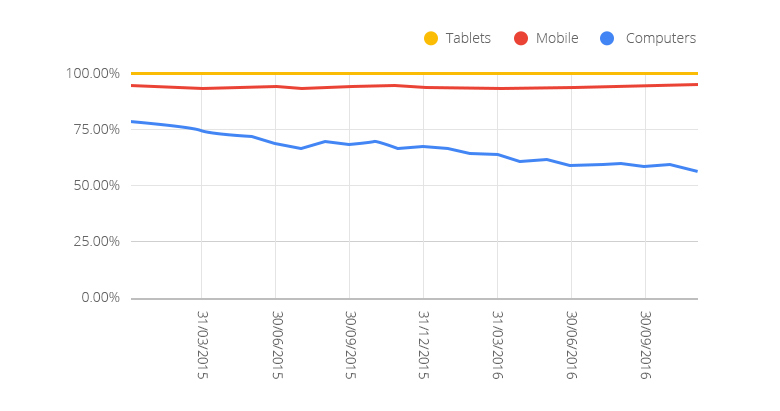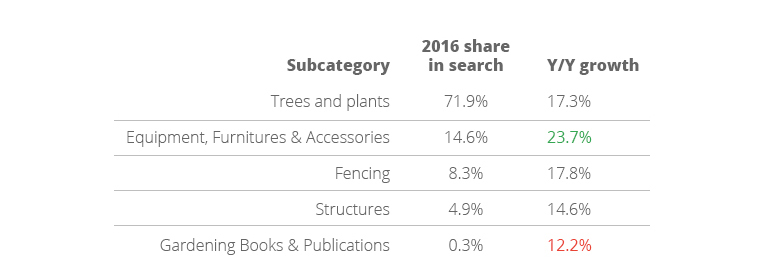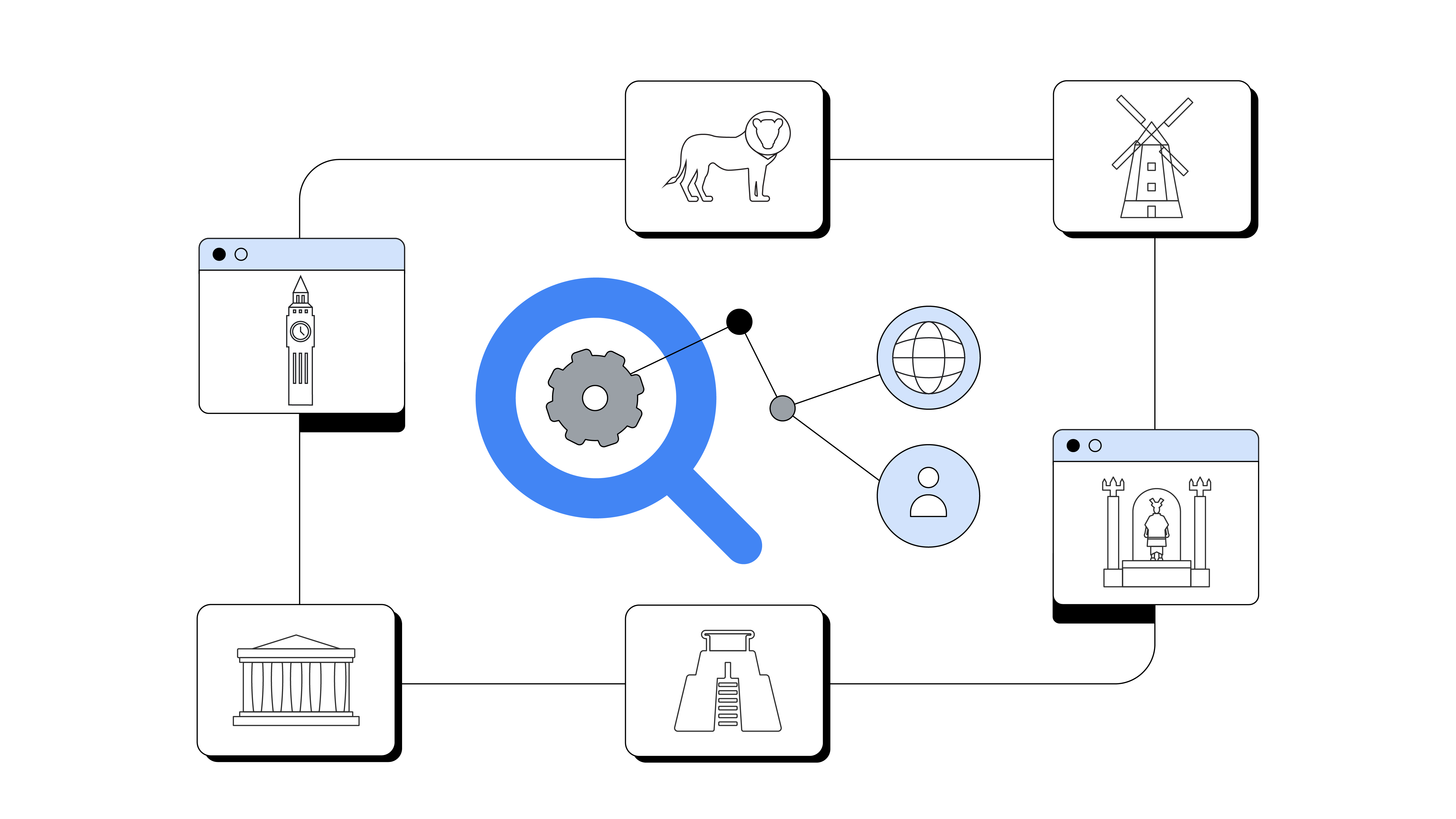Emphasising Polish consumers’ interest in out-of-home, back-to-nature activities, March marks a point when yard, garden and patio searches rise. 1 This kicks off the gardening season, the only home and garden subcategory that starts in spring. To keep up with the trend, marketers can take advantage of a host of category insights we’ll explore in depth here.

Growing mobile
In getting ready for the season, marketers offering gardening products and services don’t want to miss the opportunity to catch their customers who search the web on mobile devices. After all, 61% of Poles are on smartphones and 25% use tablets.2 While searches in the gardening category grew overall by 18% in 2016, the majority of this growth was driven by mobile searches. Over the past two years, the share of queries through these devices has almost doubled: smartphones and tablets account for 43% all gardening-related searches in Google.

Learn - Build - Protect - Repeat
Our gardens and yards are living organisms. As such, they require understanding, nutrition and protection. First, we want to learn how to take care of them, so we search for gardening books and publications when it’s most natural to reach for them – in autumn.1 Equipped with knowledge, we then turn to Google for advice about structures like pergolas and greenhouses.2 In the past couple of years, Poles have also searched for different types of fences, as well as terraces, smokehouses and jacuzzis.

Trees, plants and a plethora of equipment follow3 with consumers searching for grills, hammocks and gardening tools alongside very specific questions about flora and fauna. The latter in fact is the biggest subcategory in terms of volume – among all gardening queries in 2015 and 2016, almost 72% referred to trees and plants.

Understanding plants
Speaking of plants, there’s a clear outlier in the category. Looking at search volume, “barszcz sosnowskiego” (“Sosnowsky hogweed”) is one of the most searched terms in gardening in Poland, peaking when it’s most dangerous in July. Less frightening flora dominates the list though, and search trends reflect natural interest in them. For example most hydrangea searches occur in spring and lavender searches peak between May and July. Beautiful roses are popular in Poland throughout the whole year – and are commonly given as gifts during all months – with a slight peak in October, when it’s said to be the best month to plant them.

When looking for advice, Polish internet users refer to design and construction (“how to build a smokehouse”, “how to design a garden”), planting tips and tricks (“when to sow grass”, “how to water orchids”, “when to cut thuja” or “when to plant raspberries”) and fighting pests (“what a mole looks like”, “how to deter ticks”, “how to deter mosquitos”). Among these, “szerszeń” (hornet) and “turkuć podjadek” (mole cricket) dominate, making their way to the top queries within the whole category.
Summary
Although clearly a spring-dominated category, digital consumers’ interest in gardening shows throughout the whole year, depending on what they’re trying to achieve: protection, construction, relaxation or cultivation. One trend however is likely to remain constant and even grow: while looking after their gardens, consumers will eventually take out their phones and search for more ways to make them even prettier.







